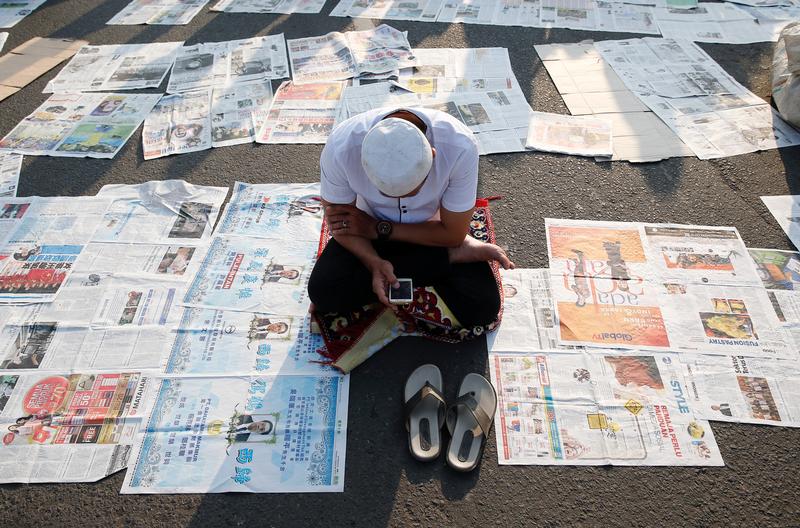
A man looks at his phone following prayers for the Muslim holiday of Eid Al-Adha on a street in Jakarta, Indonesia September 12, 2016. Reuters/Darren Whiteside

A man looks at his phone following prayers for the Muslim holiday of Eid Al-Adha on a street in Jakarta, Indonesia September 12, 2016. Reuters/Darren Whiteside
In countries where the majority of news consumption takes place on mobile devices, it has become important to see the audience not only as a news reader but also as a smartphone user who navigates using their thumb inside an operating system and between apps.
While we need to ask about what motivates them to find news, we also need to ask how they find news on their phone. How many taps, clicks, and swipes before they read a news article on their device? And what does this process mean for news consumption on mobile?
People often think of digital innovations as coming exclusively from Sunnyvale, but the Global South has a lot to offer too – especially when it comes to mobile devices. Like many Asian and African countries, Indonesia skipped the desktop era. When we think of digital, we have always meant mobile. More than 66% of the overall web traffic comes from this small device. So it should come as no surprise that this is where content distribution innovators have focused their attention.
There are two known features for news distribution on lock-screen: push notifications and wallpaper stories. While push notifications have been used for many years to deliver news alerts, wallpaper stories are more recent and currently only available on selected Android devices.
Wallpaper stories are an opt-in phone feature (not an app) offering dynamic and design-led lock-screen content that updates throughout the day. It is currently provided by Glance in India (on Xiaomi and Samsung devices) and Indonesia (currently on Xiaomi only). Xiaomi and Samsung in India account for a 40% market share in a country with a population of 1.3 billion, according to latest Counterpoint Research stats. Lock-screen content is also available on some smaller OEMs like Oppo and Vivo, who employ in-house content management teams.
I chose to focus on Glance because I work for the company’s Indonesian newsroom and have good access, and because it is the largest operator in this field with 115 million daily active users (DAUs) in India and Indonesia. To put this in context, YouTube has 225 million and Facebook has 290 million active users in India.
In my paper (download below) I explore why the lock-screen matters, and what opportunities and threats exist for news publishers who explore this distribution method. In brief, the lock-screen as a medium for news distribution has five distinctive characteristics that may be beneficial to news publishers:
There are downsides too. All of the characteristics above, in the hands of bad actors, could be misused. Misuse, or foolish use of the lock-screen space could result in news being removed entirely from this space by users or even the handset manufacturers. It also doesn’t currently offer any redress to the unresolved issues many publishers have had with older distribution platforms, like Facebook or Google.
But the idea and the technology is here. It will stay and it is likely to grow, and the power structures it creates – namely the phone manufacturers that hold ultimate control over technology and mobile infrastructure – make the lock-screen a space worth watching closely.